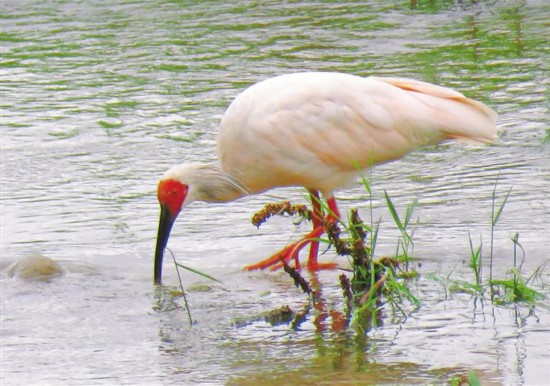Wildlife flourishes in NW China’s Qinling Mountains
An increasing number of rare wild animals and plants have been discovered in the Qinling Mountains in northwest China’s Shaanxi province, thanks to its sound ecological environment.

Aerial photo shows the forest deep in the Qinling Mountains in Jiwozi village, Chang’an district, Xi’an in northwest China’s Shaanxi province. (Shaanxi Daily/Yuan Jingzhi)
In recent years, wild animals and plants, such as Elaphe xiphodonta, a new species of the genus Elaphe, Primula filchnerae Knuth, an endangered species, and also Kingdonia uniflora, a grass species under first-class protection in China were discovered for the first time 2,700 meters above sea level in the Qinling Mountains.
“We’ve frequently captured images of wild animals, such as Panthera pardus leopards, Chinese forest musk deer, takins, giant pandas and black bears,” said Hu Wanxin from the Changqing National Nature Reserve, which is located deep in the Qinling Mountains.
Known as “a bank of biological resources”, the Changqing National Nature Reserve is home to 2,039 spermatophytes and 248 vertebrate animals, including 30 wild animals under key state protection.

A crested ibis foraging for food. (Shaanxi Daily/Shen Dongxi)
In the past, the habitats of the wild animals and plants were threatened by the cutting of trees. In 1998, tree cutting for commercial purposes was banned in the Qinling Mountains.
The Qinling Mountains are home to some 80 wild giant pandas, and the probability of seeing a giant panda in the mountains is high.
“In winter, the pandas eat bamboo grown in places 1,800 meters above sea level and below, and in summer they eat another kind of bamboo grown in places about 2,100 meters above sea level. To better protect the giant pandas, we also need to protect the bamboo forests,” Hu said.
So far, Shaanxi province has set up 116 protected grounds for wild ecological protection in Qinling Mountains, covering a total area of 9,200 square kilometers. More than 75 percent of the ecosystem types in Shaanxi and 70 percent of the wild animals and plant species have been effectively protected in the mountains.
Realizing the importance of infrared cameras in monitoring wildlife, the Changqing National Nature Reserve began installing such cameras in forests under its jurisdiction in 2008, and has captured images of several wild animals since then.

A takin in Zhouzhi National Nature Reserve. (Shaanxi Daily/Yuan Jingzhi)
“We change the batteries inside the cameras and change the storage cards on a regular basis. Through the videos and pictures taken by the cameras, we can clearly see the movements of the animals,” said Xiang Dingqian, a forest patroller with Huayang station of the Changqing National Nature Reserve.
Since 2008, the nature reserve has captured images of giant pandas, takins, and Chinese forest musk deer, which are under first-class protection in China, and black bears and golden cats under second-class protection.
Photos
Related Stories
- China takes precautions as wandering elephant herd marches north
- Interview: China steps up fight against illegal wildlife trade, crime: WildAid CEO
- SW China's Yunnan makes great efforts to protect wildlife species
- China sees remarkable progress of wildlife observation
- China prepares special protection for key wildlife species
Copyright © 2021 People's Daily Online. All Rights Reserved.










